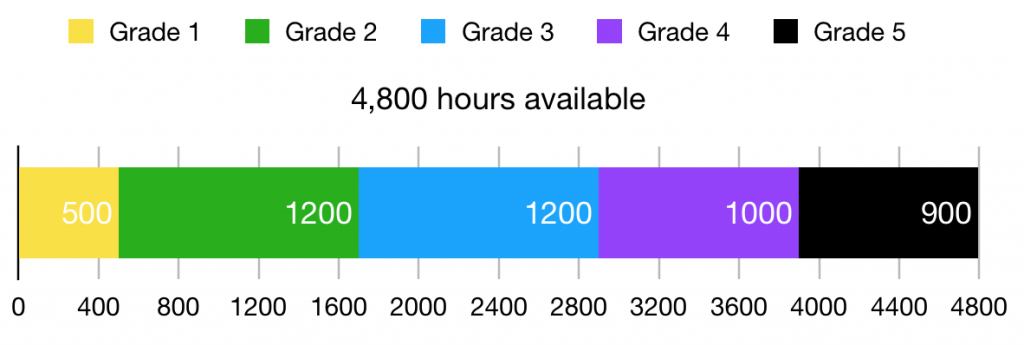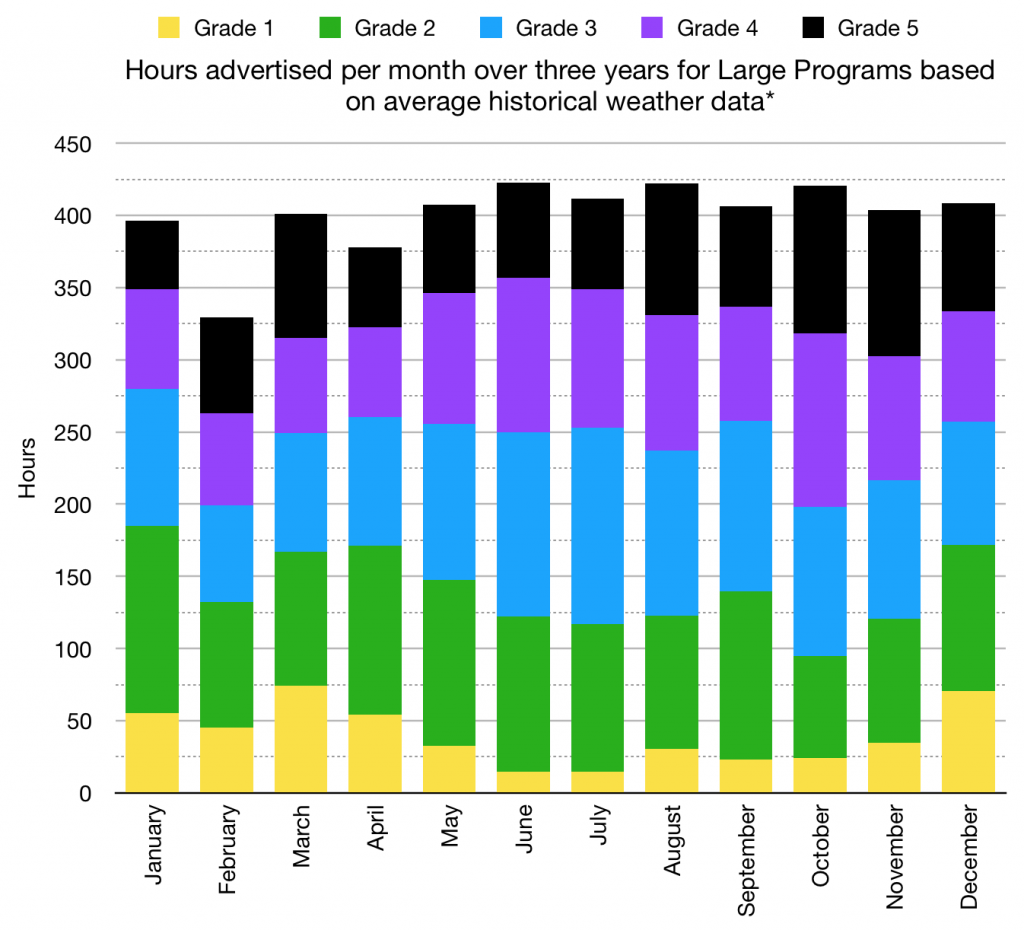The EAO are pleased to provide an early announcement of the third Call for JCMT Large Programs. This information is being provided ahead of the opening of the Call in order for current and new teams to pursue discussion and planning. Submissions will be accepted from August 15th up until the September 15th deadline. This will coincide with the 20A PI Call.
Up to 4,800 hours of time to be awarded between: February 2020 and January 2023
The call will open
Thursday August 15th 2019 (TBC)
The closing date for submissions is
Monday September 16th 2019
15:00 Hawaiian Standard Time
Overview
The East Asian Observatory announces the opening of a third JCMT Large Program Call for the James Clerk Maxwell Telescope. Large Programs are defined by the observatory as projects which require significant amounts (> 200 hours) of observing time, require more than a single semester to complete and that take full advantage of the JCMT instrumentation capabilities to address multiple important scientific questions.
This call is aimed at continuing and growing the impact of the first and second generation of JCMT Large Programs undertaken as EAO/JCMT and the JCMT Legacy Surveys.
The total number of hours available in this 20A Call for Large Programs is 4,800 hours. The break down of hours by Weather Grade is provided below with variations by month and additional numbers used provided further down this page.
To help cultivate ideas discussions on potential new JCMT Large Programs EAO have provided a wiki for interested JCMT users: www.eao.hawaii.edu/Large-Programs-Call-2019/
Large Program Definitions and Requirements
Successful JCMT Large Programs proposals will:
- be self-contained, and address a number of important scientific questions;
- generally request a minimum of 200hrs;
- use SCUBA-2 (alone or with POL-2) and/or HARP-B and/or Namakanui.
- demonstrate legacy value, fully justifying the need for survey status, rather than that of a conventional TAC proposal;
- include investigators from at least three regions. Collaborations between more than three regions are strongly encouraged – the assessment process will consider the degree to which the proposals represent the interests of all the relevant communities;
- include a viable management plan (e.g. membership rules), and publication plan;
- identify and explain any link(s) to other survey(s);
Proposal Requirements
The proposal should:
- address all of the requirements listed above
- list all PI(s), co-Is and their regional affiliations
- include both a scientific and technical case
- in the technical case, the proposal must utilize the available integration time calculators provided by the observatory to justify their time request, the proposal should also be mindful of the likely hours available at various RA ranges.
- specify the weather conditions (read opacity) that it requires or can tolerate. The amount of time available per weather/opacity band varies through the year
- be submitted via the Hedwig proposal system, by the deadline. Any questions regarding proposals should also be directed to this address or to the help desk
- Source lists – should be uploaded to Hedwig
Time Available
In the 20A Call for Large Programs 4,800 hours are available. Half of the available science time between February 2020 and the end of January 2023 (the end of 22B) will be available to Large Program proposals that meet the required goals. The JCMT normally operates a 13-hour night, running from approximately 6:00pm to 7:00am HST, during which usually 10 hour per night is available for science observations (the rest is used for pointing and calibration). Table A and Table B show source transit times during (roughly) the first and seconds halves of the year.
The graph below shows in more detail the estimated distribution of available science time for new Large Programs. This constitutes 50% of the total available time – the other 50% will remain available for P.I. projects. The hours are broken down in approximate distribution as a function of weather grade derived from long-term averages (2003-2015) as determined by the CSO radiometer and 183GHz Water Vapor Meter (WVM) at JCMT.
The numbers provided here take into account a 13 hour night, possibility for additional time in stable weather under Extended Observing. *This plot excludes time remaining from 20A on current Large Programs: those awarded time in the 19A call for Large Programs, and A-ranked programs awarded time in the 17B Call. B-ranked Large Programs will need to re-apply for time and compete against new programs. Please note these are mean values with large ranges, year on year weather variation are quite dramatic.
Large Program Review and Proprietary Periods
The Scientific Time Allocation Committee will assess all proposals during the autumn of 2019, and provide recommendations for survey time awards to the JCMT Board. The JCMT Board will determine the final allocations. The JCMT Board also have the power to adjust priorities of existing programs based on productivity/progress. Award announcements will be made to successful P.I.s in November 2019.
When the announcements of New Large Programs are made sign-up for membership to successful surveys will be announced and supported by the JCMT. Surveys will be asked to prepare for submission of observations to the observatory which will commence in February 2020.
Large Program data will have the same proprietary period as P.I. data collected at the JCMT, consisting of a full year following completion of the semester in which the data was taken. Approved programs will be required to provide periodic updates to the observatories. Each program will be asked to provide evidence of:
- Data reduction/analysis work and identify teams leading this effort
- At least three talks per year within each EAO/JCMT partner region – promoting the program’s scientific goals and accomplishments.
- Road map to publications – including expected date of submission, lead author and brief overview
- Where applicable a list of related proposals at other telescope facilities
- Regular meetings reduction/analysis meetings and yearly Face-to-Face (or program wide) meetings
There will be a mid-Large Program review to assess the performance of the Large Programs in progress.
Eligibility
Proposals will be accepted from scientists from any of the East Asian Observatory regions (Japan, China, Taiwan, South Korea, Thailand, Vietnam, Indonesia, and Malaysia) and participating JCMT regions Canada, and participating institutes from the UK and Ireland. For more information please read the EAO eligibility pages. Any scientist from these regions is eligible to participate at any level (PI or co-I) in a Large Program proposal. Collaborations are strongly encouraged and subject to the requirements (see Large Program Definitions and Requirements).
Following the approval of a Large Program, admission to a Large Program collaboration will be opened to scientists from all participating regions prior to the start of observing (Open Enrollment). Membership following that period will be at the discretion of the individual program management team. The JCMT will provide assistance in maintaining survey sign-up and membership distribution lists and webpages as required.




